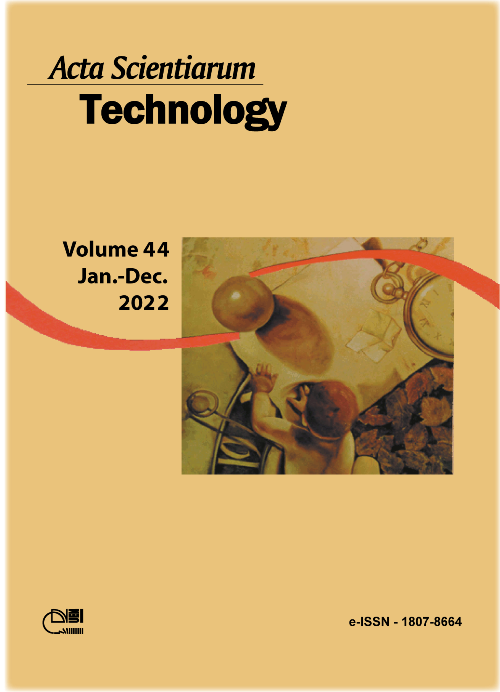Tensor based statistical segmentation of green vegetation canopy images
DOI:
https://doi.org/10.4025/actascitechnol.v43i1.55708Keywords:
Image processing; 3rd order tensors; statistical pattern recognition; precision agriculture; machine learning; vegetation segmentationAbstract
The increase of developments of electronic and computer has been resulted with the commonly use of these technologies in everyday life in many applications. One of these applications is emerged in agricultural applications as precision agriculture studies. The use of technology in agriculture has lots of benefits such as energy saving, yield increase, time saving and etc. In this study, a novel learning based, pixel-wise segmentation method which uses Common Vector Approach (CVA) for the first time in the literature for segmentation is proposed. In the proposed method, first of all color regions belong to both vegetation and soil are manually cropped and then three different color space representations such as HSV, Lab and Luv of RGB images for each color region are encoded as 3rd color tensors. Then by unfolding the color tensor in the mode-3 direction, 2-D color matrix is obtained. The columns of this 2-D color matrix are the dimensional vectors that include (H, S a, b, u, v) components of HSV, Lab and Luv color spaces of an image pixel, and each column vector is accepted as an object. By applying CVA in object space consisting of column vectors of 2-D color matrix, a common color vector which represents common properties of that color region is obtained and used for segmentation purposes. In the experimental studies two different datasets proposed for open computer vision tasks in precision agriculture before in the literature are used. Three different experimental studies are performed for different dataset combinations in terms of training set and the test set. The performance of the proposed method has been compared with the performance of a deep learning method, Convolutional Neural Networks (CNN) based semantic segmentation method. In all of the three experimental studies proposed method achieves extremely high performance according to CNN, especially in the second and in the third experimental studies where dataset combinations include the two of the datasets.
Downloads
Downloads
Published
How to Cite
Issue
Section
License
DECLARATION OF ORIGINALITY AND COPYRIGHTS
I Declare that current article is original and has not been submitted for publication, in part or in whole, to any other national or international journal.
The copyrights belong exclusively to the authors. Published content is licensed under Creative Commons Attribution 4.0 (CC BY 4.0) guidelines, which allows sharing (copy and distribution of the material in any medium or format) and adaptation (remix, transform, and build upon the material) for any purpose, even commercially, under the terms of attribution.
Read this link for further information on how to use CC BY 4.0 properly.



















8.png)




